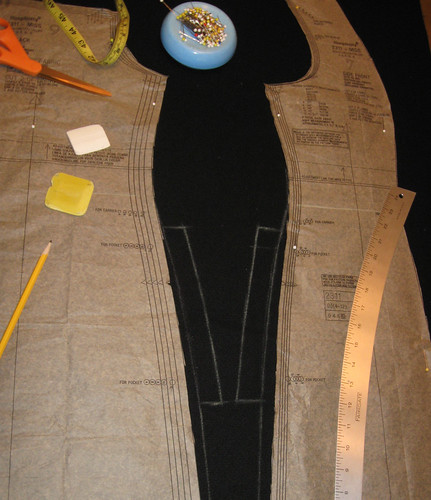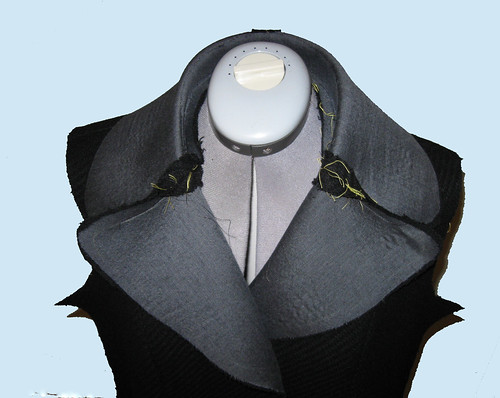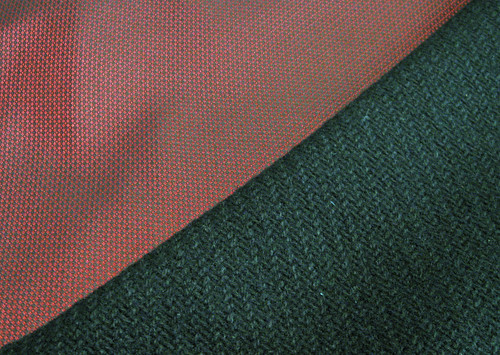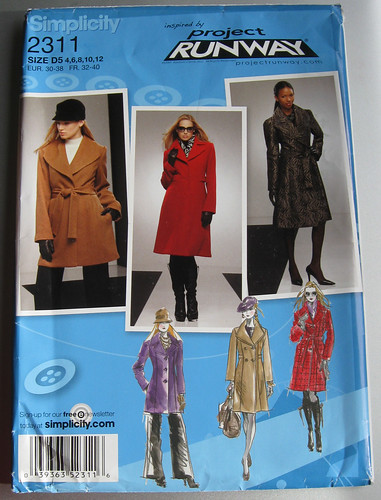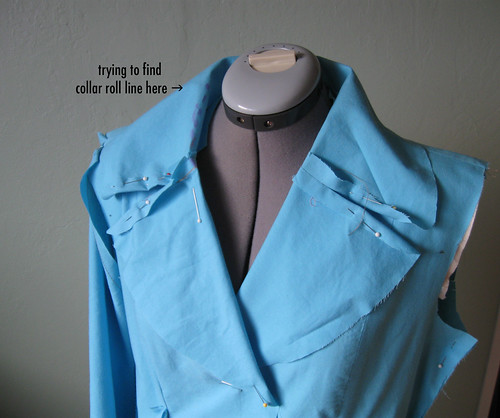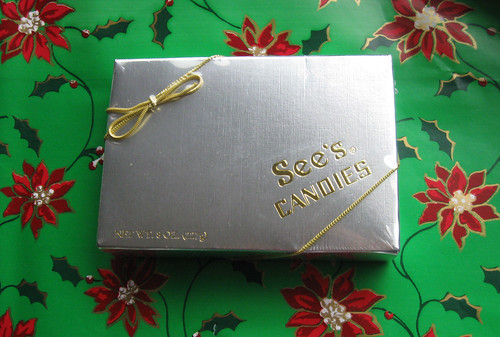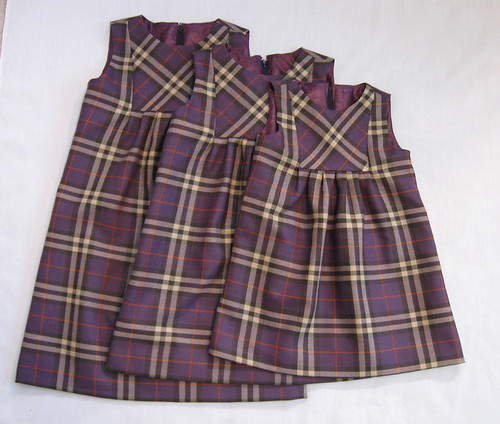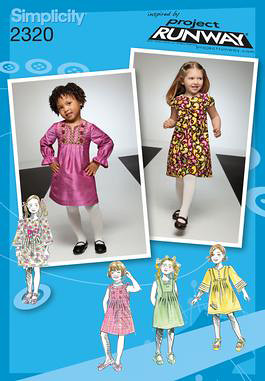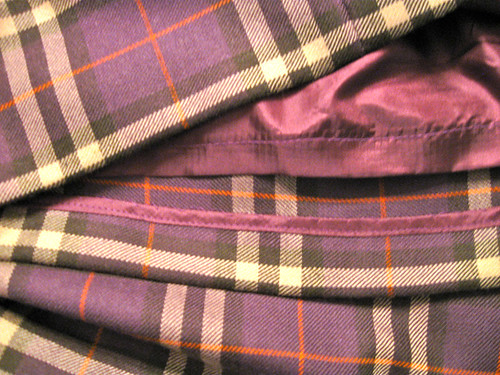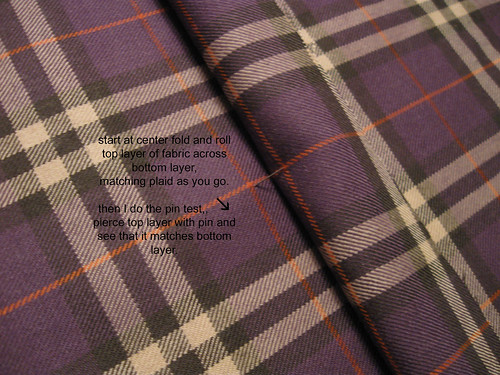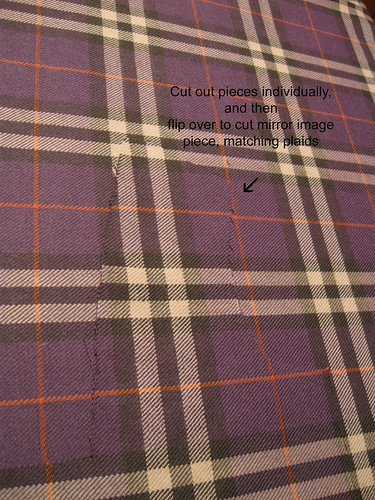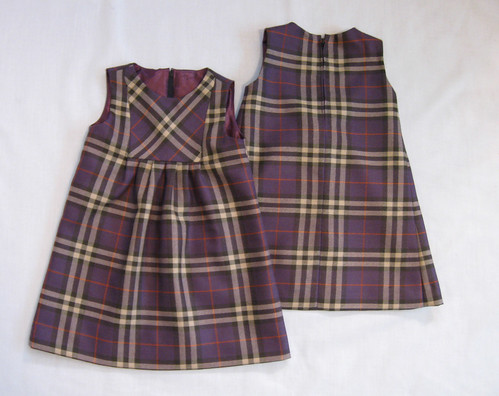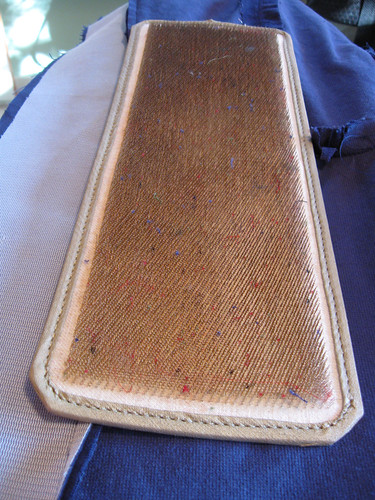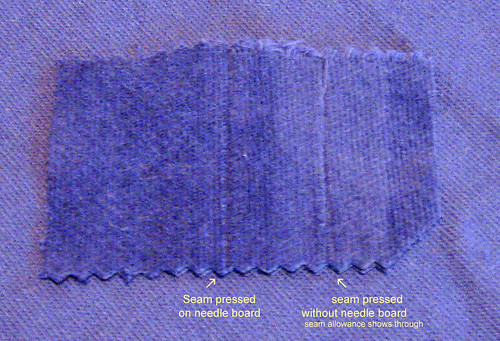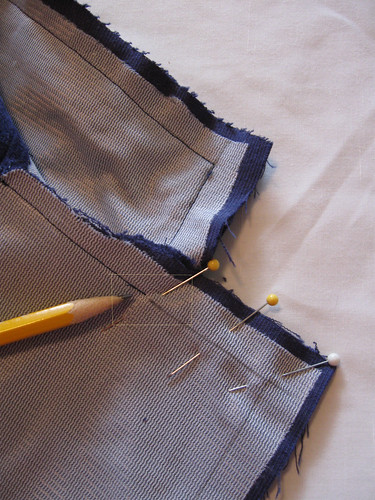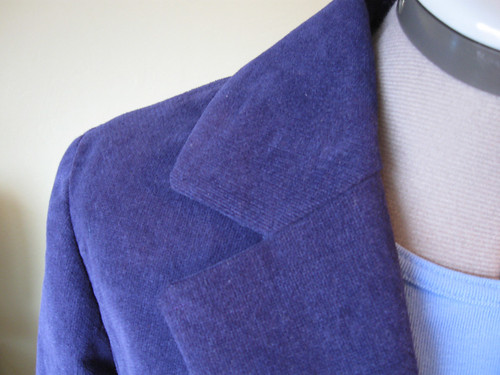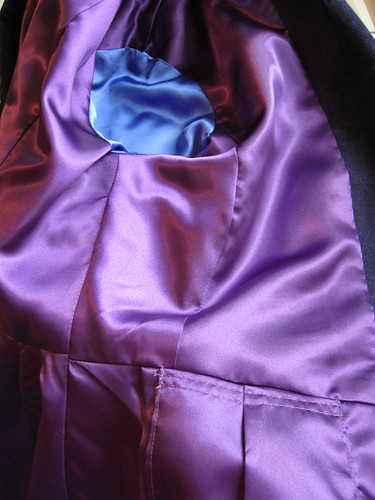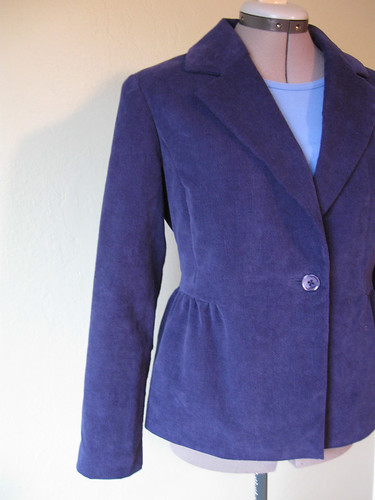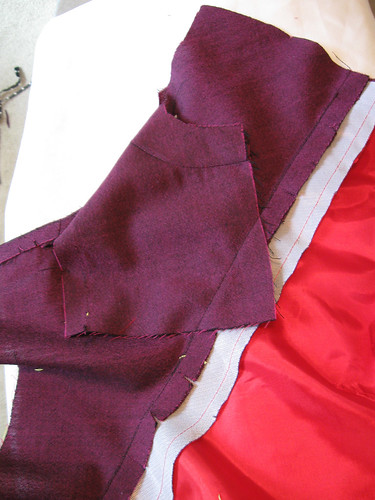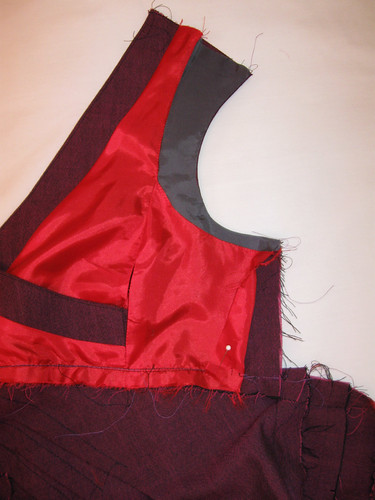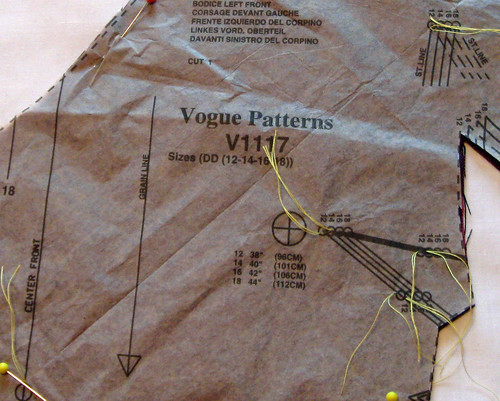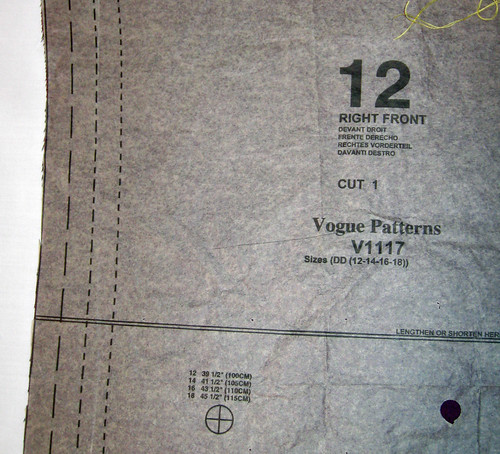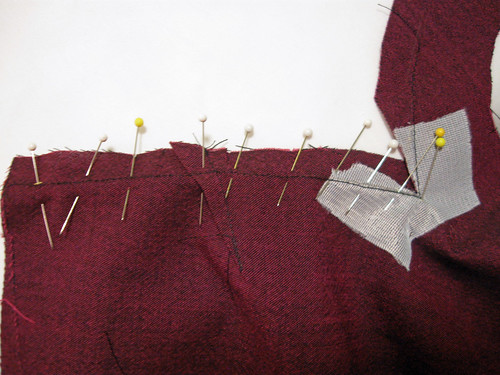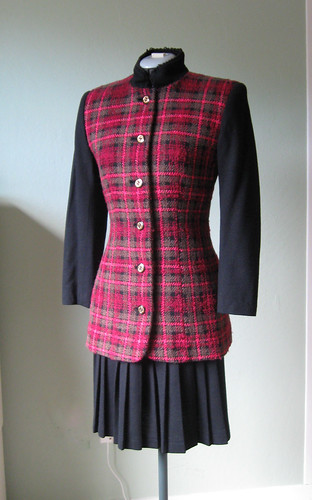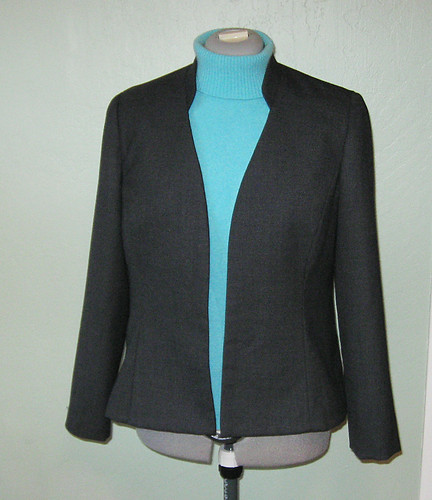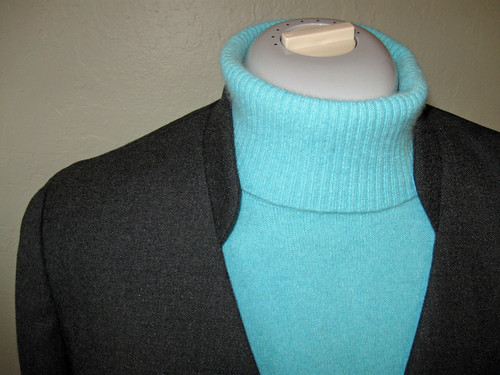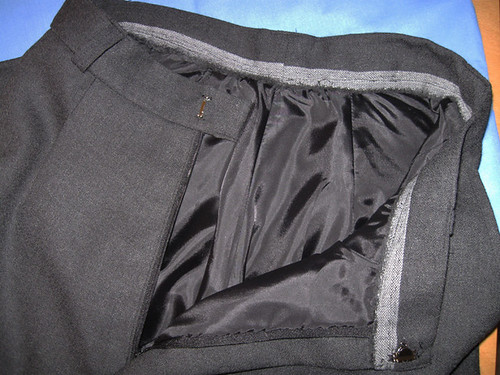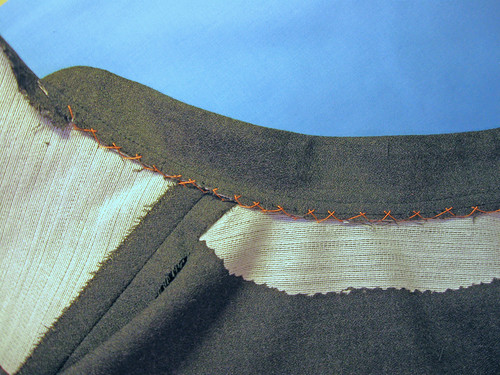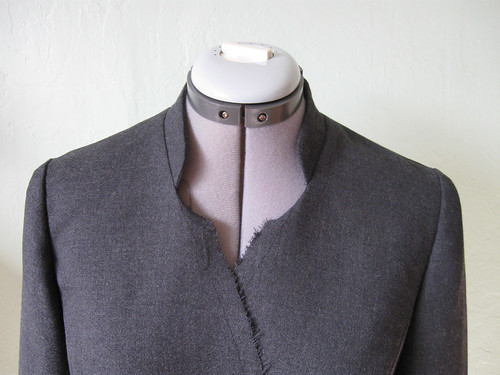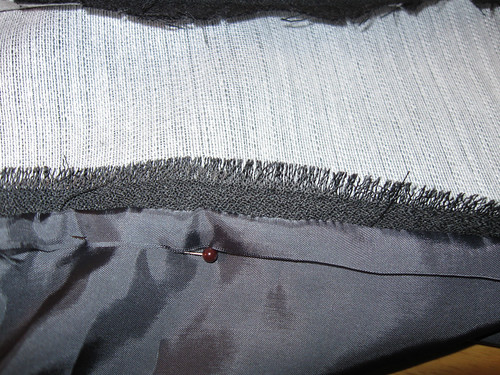Before I get to the collar - I have a quibble with the pattern companies on pockets. On many of the patterns for coats, and dresses too, the pocket is sewn right on the side seam allowance, at about 1/4" from the cutting line. Then when the side seam is pressed the pocket seam and fabric is really only 3/8" or so distant from the side seam. I don't like it when I can see the pocket lining, when the wearer moves or sits down. The best hidden pocket should disappear in to the seam, wherever it is. I realize that the pocket bag on the back can be of self fabric, but even then that seam could show. This oversight by the pattern designer can be remedied by adding an addition to the side seam at the location of the pocket, and then sewing the pocket pieces on that. Thus the pocket is tucked about 1" or more away from the seam and should stay hidden.
While I like multi-size patterns a lot, I think the pattern companies fall back on the excuse of simplifying things like this to eliminate features that you find on higher quality ready to wear or many vintage patterns. One more reason to look closely at vintage designs, there is a wealth of information in those older patterns and books.
Here is my coat thus far, with under collar sewn on. Lots more to do before I attach the upper collar and lapel, mostly trim that seam and catchstitch it above and below that seam. The interfacing used is Pro-Tailor Deluxe Fusible from Fashion Sewing Supply.
Here is a look at the under collar. Once I figured out on the muslin where the collar roll line was, I transfered that marking back to the pattern piece. Then I cut a 2nd layer of interfacing on the straight grain of the interfacing (as opposed to the original layer of interfacing which is on the bias just like the undercollar. After that I folded the collar at the roll line and placed it around a pressing ham, and steamed it, then left it overnight. In the morning it was as seen above, with a nice soft roll that will stay, and support the upper collar.
My question for the day is the following: Velvet upper collar ? or continue with same fabric, black wool? This is just a test look, black velvet draped over left side and wool on the right.
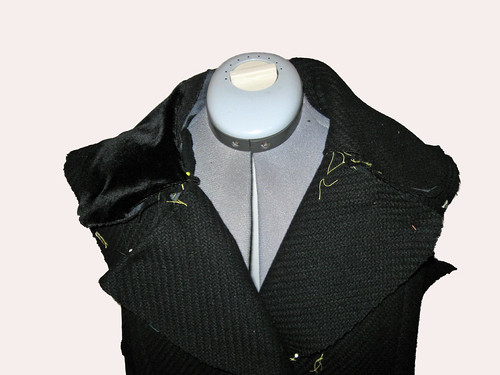 The velvet looks a bit odd because of the flash. I was sure I wanted a velvet collar, to make it a bit dressy and I don't like itchy wool on the back of my neck. It could look like some weird Victorian gentleman's coat. Which is a nice look but not what I was going for. I have to see it in the daylight tomorrow but I am almost sure which way to go.
The velvet looks a bit odd because of the flash. I was sure I wanted a velvet collar, to make it a bit dressy and I don't like itchy wool on the back of my neck. It could look like some weird Victorian gentleman's coat. Which is a nice look but not what I was going for. I have to see it in the daylight tomorrow but I am almost sure which way to go.How do you solve the itchy collar dilemma? Or do you avoid wool entirely? Let me know what you think.
Next post, adding darts on the back and my adjustment to the pattern's lining design.
Happy Holiday Sewing, Beth

